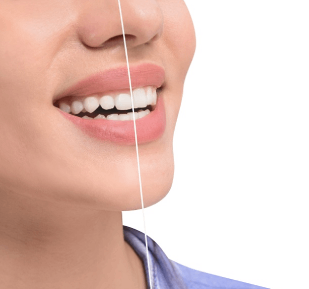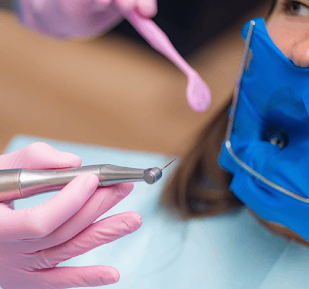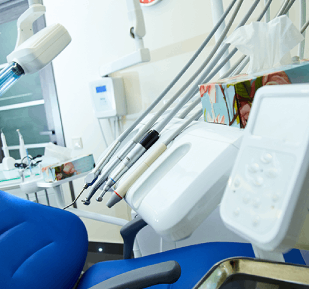
Orthodontics
What Is Orthodontics?
Orthodontics is the specialty that corrects malocclusion, gaps in the teeth, and deals with the bite problems which arise due to the misalignment in the jaws' relationships. The goal of orthodontic treatments is providing suitable function and aesthetics by fixing the deviations in the maxillofacial region of the patient and improving patient's psychology by helping eliminate some speech disorders.
Since misaligned and poorly located teeth are more difficult to clean, as well as affecting the aesthetic image, it may lead to early tooth loss due to periodontal diseases and dental caries. You can check out our blog post on the topic of Applications of Braces for the treatment of misaligned teeth.
What Are Orthodontic Treatments?
- Application of various fixed and movable devices,
- Aesthetic or metal brackets applied from the outer surface of the teeth,
- Correction of pathology with braces (Lingual orthodontics) applied behind the teeth,
- Application of unnoticeable invisible aligners,
- Orthodontic treatments including orthognathic surgery in severe skeletal disorders,
- Treatment of infants, children and adults with cleft lip and palate,
- Treatments of temporamandibular joint disorders are covered by orthodontic treatment.
How Are Orthodontic Disorders Classified?
They can be classified as dental and skeletal. There is a problem in teeth alignment in dental problems, while in the skeletal problems, it is the development of jaw bones or jaw's location. There may also be situations when both problems are observed together.
What Are The Causes Of Orthodontic Disorders?
There are two main reasons. First one is genetic and familial traits. The other one is environmental factors. The first environmental factor is the early loss of temporary teeth due to insufficient care. This situation results in a lack of room for the teeth to erupt later. Habits such as long-term use of pacifiers and bottles, finger sucking, lip sucking, pen biting and incorrect swallowing are also other environmental reasons. In addition, in cases where the patient can not nasal breath comfortably, also cause upper jaw stenosis and temporamandibular disorders. Jaw and jaw joint injuries suffered by children at an early age can lead to disorders in the growth of the jaw. The coexistence of some of the above-mentioned factors in the same patient can cause severe temporamandibular disorders.
What Is The Optimal Age For Orthodontic Treatment, Is There An Age Limit?
It is not correct to give an exact age, as the age of treatment will vary for each patient. Some temporamandibular disorders require early intervention as soon as possible, while for some tooth disorders, it may be appropriate to wait until around the age of twelve. Therefore, it is important to periodically undergo examinations by a dentist. In some disorders, it is highly important not to miss the growth spur and development of a child. Therefore, a surgical operation, which may be required in the future, is prevented beforehand. That being said, there is no age limit in orthodontic treatments. Treatment of disorders that can be corrected with only tooth movement is possible at any age, as long as the tissues surrounding the teeth are healthy. There are different treatment techniques depending on whether the patient is a child, teenager or adult.
How To Understand If My Child Needs To Wear Braces?
The best method for finding out is an examination by an orthodontist. Some developmental disorders may go unnoticed by parents. Following symptoms may need treatment: Crowded teeth which is misaligned and located in the wrong place or have not erupted, diastema, teeth in the lower and upper jaw that do not align and touch (openbite), gaps between jaws, or jaws locking in an abnormal manner, the upper front teeth that cover up too much of the lower front teeth, front teeth that are positioned in the front of the lower teeth (overjet), early or late loss of temporary teeth, chewing and biting problems, asymmetrical jaw-face structure, extreme jaw structures positioned forward or back (underbite and deepbite), asymmetric facial structure, bad habits such as mouth breathing, bruxism and grinding teeth, thumb sucking, nail biting, lip or cheek biting and oral dysphagia - pushing the tongue forward when swallowing (incorrect swallowing habit).
When Should I Take My Child To An Orthodontic Examination?
Orthodontic examination should be performed before your child turns 7 years old. Thus, abnormal developments are detected in a timely manner and orthodontist determines the optimal time to start treatment. Even if your child is older than the age of seven, you must take him/her to an examination. The problem will be eliminated before it gets serious in an early examination with a simple preventive or protective intervention. Usually, orthodontics treatment starts between the ages of 9-14.
How Is The Orthodontic Examination Performed? How Is The Treatment Determined?
For detailed evaluation after patient examination, orthodontic records are taken. These are measurements, panoramic and cephalometric X-rays showing the jawbones and all teeth, hand-wrist radiographs showing growth and development, and intra/extra-oral photographs of the patient. These records are evaluated in detail and treatment devices to be used and the appropriate method of treatment are determined.
How Long Does Orthodontic Treatment Take?
The state of the disorder, stages of treatment and patient's compliance determine the duration of the treatment. Under normal conditions, orthodontic treatment takes 2 years on average. But there are also disorders that last less than a year or take a longer time, for example up to 3-4 years. The duration of orthopedics of the skeletal jaw treatment, which is performed by taking advantage of the growth and development period, may vary in parallel with growth and development. The duration of treatment is also influenced by the patient's cooperation with his/her doctor. Compliance with orthodontist, proper use of appliances and good oral hygiene ensures that treatment is completed on time.
What Problems Do Orthodontic Disorders Pose If They Are Not Treated?
They can cause aesthetic, functional, and sometimes psychological problems. It can prevent you from smiling comfortably. Due to the crowded teeth, cleaning can not be done properly, thus oral hygiene deteriorates, and it leads to carries and bad breath. There may also be problems with the jaw joint due to the trouble in biting properly. Bite problems can also lead to abnormal abrasion of the tooth surfaces and damage the supporting bone and gum tissue.
What Should Children And Their Parent Pay Attention To In Orthodontic Treatment?
There are rules that families and children must follow in orthodontic treatments. Therefore, it is important that the child is willing to undergo treatment. Parents must carefully monitor their children during the treatment period, support, motivate and help them when necessary. Appliances should be used as instructed, the physician's recommendations should be followed, and teeth should be brushed regularly. After starting treatment, there is a follow-up examination once a month on average. At the end of the treatment, retainers should be used as instructed so that the teeth do not return to their original form and follow-up examinations should not be neglected.
What Are The Methods Used During Orthodontic Treatment?
There are many different orthodontic treatment options available today, such as fixed orthodontic treatments ranging from metal, ceramic and lingual braces which are called invisible orthodontics, as well as transparent aligners that have become quite popular recently. Each of them has its own areas of use. Orthodontists carry out personalized treatment planning considering all the variables such as age, temporamandibular disorders and differences in tooth sizes. The ideal method is selected by choosing the most suitable treatment option and taking into account the patient's desire. Treatment with conventional metal and ceramic brackets is carried out with attachments that are fixed on the teeth and wires that pass through them. Transparent aligners are invisible, thin, plastic-like materials that are formed to fit the individual's teeth and they are removable. Problems that cannot be corrected by orthodontic treatment alone can be corrected by surgical-orthodontic cooperation. Before the surgical operation, the orthodontist reveals the ideal surgery plan together with the surgeon who will perform the surgery by orthodontically placing the teeth to their ideal places in the jawbone.














